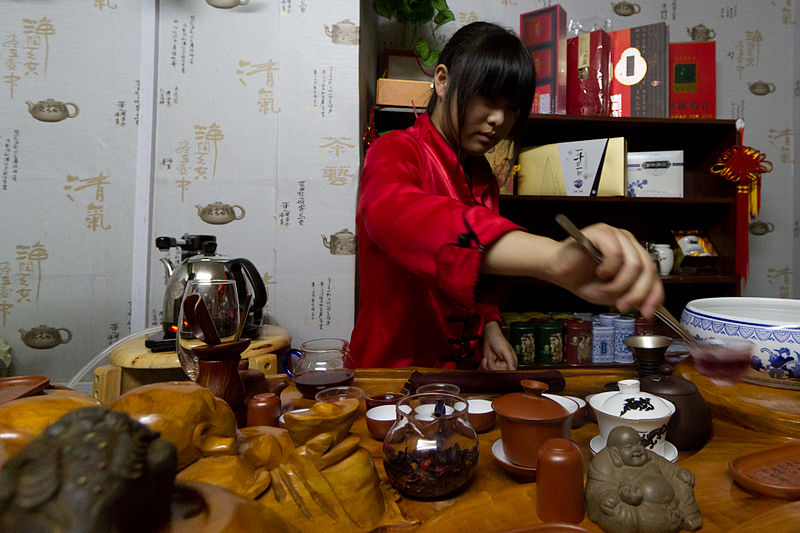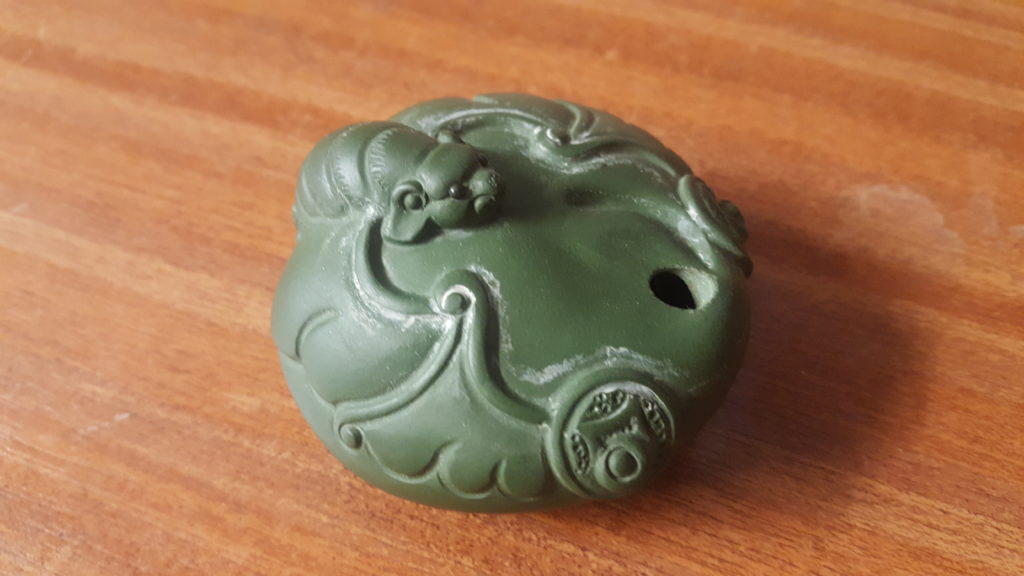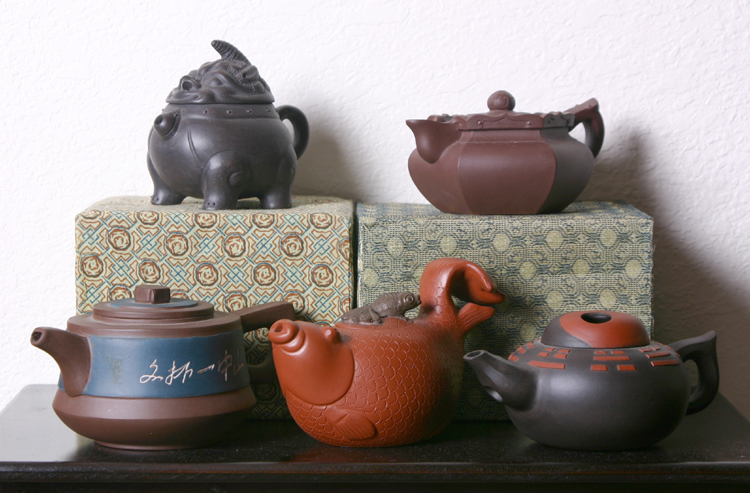Chinese tea drinking culture is thousands of years old and remains incredibly important to most people in China. From the most basic shack to the grandest house, every dwelling contains the tools required to make tea. The practice of making tea is steeped(!) in tradition and there is a lot more involved than simply throwing a tea bag in a mug and adding hot water.
One interesting tradition involves what is known as a tea pet or tea lover’s pet. I learned about this tradition when I acquired a tea pet not long ago. The tea pet usually takes the form of a small clay animal or sometimes a young boy. They are “raised” by the tea drinker who owns them by introducing tea to their unglazed form on a regular basis, thereby building up a patina, or coating, on the surface of the clay.

Tea preparation with Buddha tea pet in foreground
The clay used must be a specific type from a specific region. Yixing clay is
found in Jiangsu province and comes in three colours – purple, green and red. You may have heard of Yixing teapots which must be treated in the same way as tea pets, every time you fill the pot it will absorb some tea and by pouring tea over the body of the pot you can build up a coating on the surface and this retains the colour and flavour of the tea. A dedicated tea drinker will only steep one kind of tea in a particular teapot so as to avoid tainting the flavour already achieved through absorption. And you thought you were picky because you don’t like Typhoo!
Some tea pets, mine included, have a hole through which to fill them, but also a tiny hole elsewhere through which water can escape. When filled with cold water and then hot water is poured onto the outside, if the water is hot enough to make tea, the difference in temperature will cause the cold water to squirt out from the tiny hole. One of the most popular designs is called Pee Pee Boy and, you guessed it, the tiny hole makes it looks like the little boy is having a wee. Charming!

My own tea pet in the form of a sacred bat or fu
My tea pet is in the form of a bat which in Chinese culture symbolises good
luck. The Chinese word for Bat (fu蝠) sounds identical to the word for good fortune (fu福) so it makes sense that it has come to mean the same thing. It is made from green Yixing clay and is not very old but is still very beautifully formed. Having never heard of tea pets before a few weeks ago, I am now very interested in the history and tradition surrounding them and hope to find a few more, hopefully older ones in the future.
Alex

